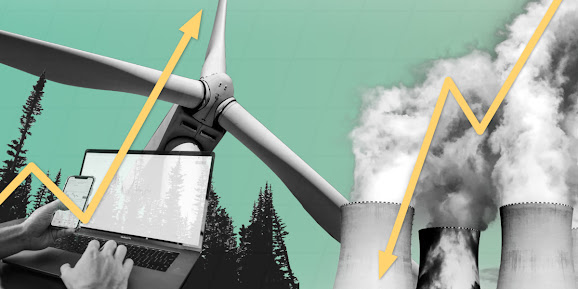Understanding the Climate and Carbon Finance Market: A Comprehensive Guide, Report, Analysis 2030
 |
| Climate and Carbon Finance Market |
Climate change has become a pressing global concern, and the need to mitigate its impact is more critical than ever. As governments, businesses, and individuals strive to transition to a more sustainable future, climate and carbon finance has emerged as a key player in driving positive environmental change. In this comprehensive guide, we will delve into the intricacies of this market, exploring its significance, functioning, and the opportunities it presents for a greener economy.
The Global Climate and Carbon Finance Market witnessed a valuation of approximately US$ 355.44 billion in 2022. It is anticipated to demonstrate a robust compound annual growth rate (CAGR) of 29.3% throughout the forecast period, reaching a value of US$ 2,776.82 billion by the end of 2030.
What is the Climate and Carbon Finance Market?
The Climate And Carbon Finance Market primarily revolves around the trading of carbon credits, which are permits that allow organizations to emit a certain amount of carbon dioxide or other greenhouse gases. This market operates under the cap-and-trade system, wherein a government sets a limit (cap) on total emissions, and businesses are allotted allowances corresponding to their emission targets. If a company exceeds its allocation, it must buy additional carbon credits from entities that have surpluses. This mechanism creates a financial incentive for companies to reduce their carbon footprint.
The Significance of Climate and Carbon Finance: Mitigating Climate Change: By putting a price on carbon emissions, the Climate and Carbon Finance Market encourages businesses to invest in cleaner technologies and processes, reducing overall greenhouse gas emissions.
Promoting Sustainable Practices: Companies are incentivized to adopt eco-friendly practices and transition to renewable energy sources to optimize their carbon allowances and avoid excessive costs.
Funding Green Projects: The revenue generated from the sale of carbon credits can be channeled into financing projects that aim to combat climate change, such as afforestation, renewable energy initiatives, and sustainable infrastructure.
The Functioning of the Climate and Carbon Finance Market: Carbon Credits Issuance: Governments or authorized entities issue a specific number of carbon credits, each representing one ton of carbon dioxide equivalent (CO2e) emissions.
Emissions Reporting: Companies are required to monitor and report their greenhouse gas emissions regularly. These reports are verified by accredited entities to ensure accuracy.
Trading and Compliance: Companies can trade carbon credits on exchanges to buy or sell allowances based on their emission needs. Non-compliance with emission limits results in financial penalties.
Opportunities and Challenges:
Opportunities: Businesses can capitalize on the Climate And Carbon Finance Market by adopting sustainable practices and selling excess carbon credits, creating an additional revenue stream. Moreover, investing in carbon offset projects presents a chance to contribute to environmental conservation. An essential component of the Climate and Carbon Finance Market is Carbon Verification, which ensures the credibility and accuracy of carbon reduction claims and emission reduction projects
Challenges: Certain industries may face higher compliance costs due to their emission-intensive nature. Additionally, the market's effectiveness relies heavily on accurate emissions reporting and monitoring, making data transparency a crucial aspect.
Conclusion: The Climate And Carbon Finance Market plays a pivotal role in driving the transition to a low-carbon economy. By understanding its functioning and the opportunities it presents, businesses can proactively align their strategies with sustainability goals while contributing to the global fight against climate change. As individuals, supporting companies that prioritize environmental responsibility can further amplify the positive impact of this market. Together, we can forge a greener and more sustainable future for generations to come.



Comments
Post a Comment